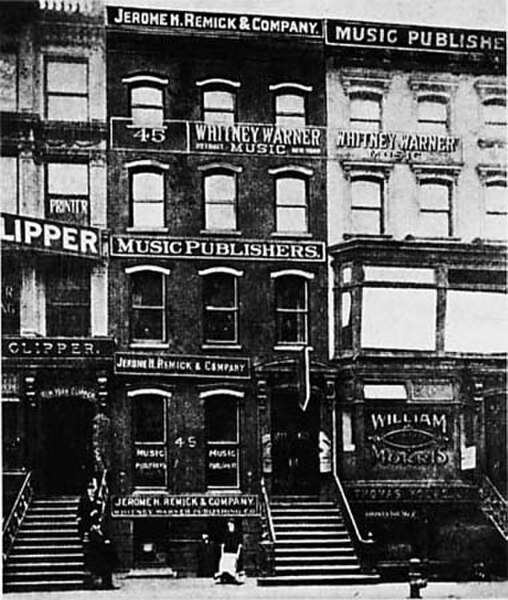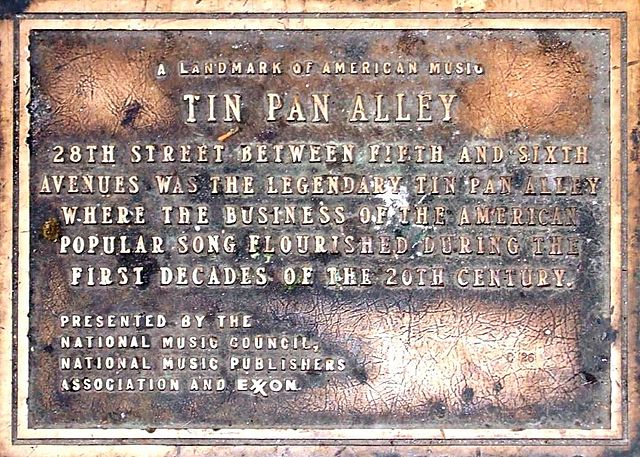"Lovesick Blues" is a Tin Pan Alley song, composed by Cliff Friend, with lyrics by Irving Mills. It first appeared in the 1922 musical "Oh, Ernest", and was recorded that year by Elsie Clark and Jack Shea. Emmett Miller recorded it in 1925 and 1928, followed by country music singer Rex Griffin in 1939. The recordings by Griffin and Miller inspired Hank Williams to perform the song during his first appearances on the Louisiana Hayride radio show in 1948. Receiving an enthusiastic reception from the audience, Williams decided to record his own version despite initial push back from his producer Fred Rose and his band.
"First sheet music, published in 1922" (PDF). 1922.
Hank Williams, depicted on an MGM publicity portrait
Tin Pan Alley was a collection of music publishers and songwriters in New York City that dominated the popular music of the United States in the late 19th and early 20th centuries. Originally, it referred to a specific location on West 28th Street, between Fifth and Sixth Avenues in the Flower District of Manhattan, as commemorated by a plaque on 28th Street between Broadway and Sixth. Several buildings on Tin Pan Alley are protected as New York City designated landmarks, and the section of 28th Street from Fifth to Sixth Avenue is also officially co-named Tin Pan Alley.
Buildings of Tin Pan Alley, 1910
The same buildings, 2011
These buildings (47–55 West 28th Street) and others on West 28th Street between Sixth Avenue and Broadway in Manhattan housed the sheet-music publishers that were the center of American popular music in the early 20th century. The buildings shown were designated as historic landmarks in 2019.
Plaque commemorating Tin Pan Alley






